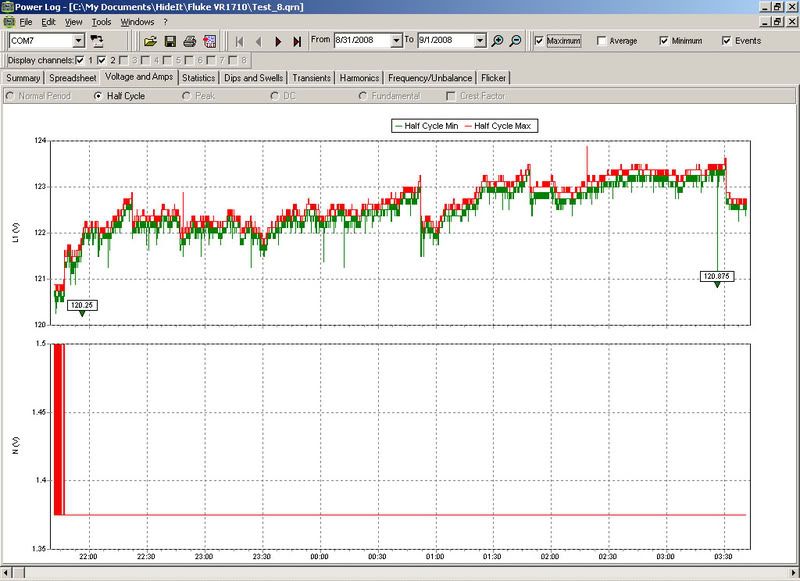100208-1550 EST
hilltop:
Returning to your original post.
Hoe does one measure millivolt spikes on a nuetral??
Measure relative to what? A ground rod somewhere? The main water pipe? The chassis of you device that is being bothered? The voltage drop along the neutral from the main panel to the instrument?
Why do you care about millivolt spikes on the neutral?
I have sensitive equipment that is seeing consistant millivot spikes [recorded by instrument mapping] which occurs approx. every 2 minutes.
Why would millivolt spikes on the neutral have anything to do with what your equipment sees?
How do I test my service nuetral to see if it is generated at the source or the load???
Again the question arises --- what is the reference point to use for the measurement?
Consider this: the power company has a transformer that supplies your main panel. There is a neutral wire from the transformer to the main panel. This wire was connected to earth at the transformer. It is also connected to earth at the main panel.
If no current flows in the neutral wire there is no voltage drop along the neutral wire. If the neutral wire resistance is 0.01 ohm and there is an on-off cycling of 100 A thru the neutral, then there will be an on-off voltage drop along the neutral of 0 to 1 volt.
If I run a test probe wire from the transformer neutral to a recording instrument at the main panel and the other signal input to the recorder to the neutral at the main panel, then I will see a 0 to 1 V changing signal.
If instead I put the reference lead on the neutral at the main panel and the signal input on the neutral at the panel. then I see 0 volts change even though there is a 1 volt change between the transformer and the main panel.
You have to define what you want to look at and for what reason.
--- to see if it is generated at the source or the load???
You need to think about this part of your question and try to define what you really want to know.
.

